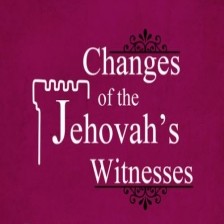Significant is this comment in the book The Cross in Ritual, Architecture, and Art: “It is strange, yet unquestionably a fact, that in ages long before the birth of Christ, and since then in lands untouched by the teaching of the Church, the Cross has been used as a sacred symbol. . . . The Greek Bacchus, the Tyrian Tammuz, the Chaldean Bel, and the Norse Odin, were all symbolised to their votaries by a cruciform device.”—By G. S. Tyack, London, 1900, p. 1.
Insight On the Scriptures-Volume I. 1988 p. 1191-1192
“It is strange, yet unquestionably a fact, that in ages long before the birth of Christ, and since then in lands untouched by the teaching of the Church, the Cross has been used as a sacred symbol. . . . The Greek Bacchus, the Tyrian Tammuz, the Chaldean Bel, and the Norse Odin, were all symbolised to their votaries by a cruciform device.”—The Cross in Ritual, Architecture, and Art (London, 1900), G. S. Tyack, p. 1.
Reasoning From the Scriptures. 1985, 1989 ed. p. 91
